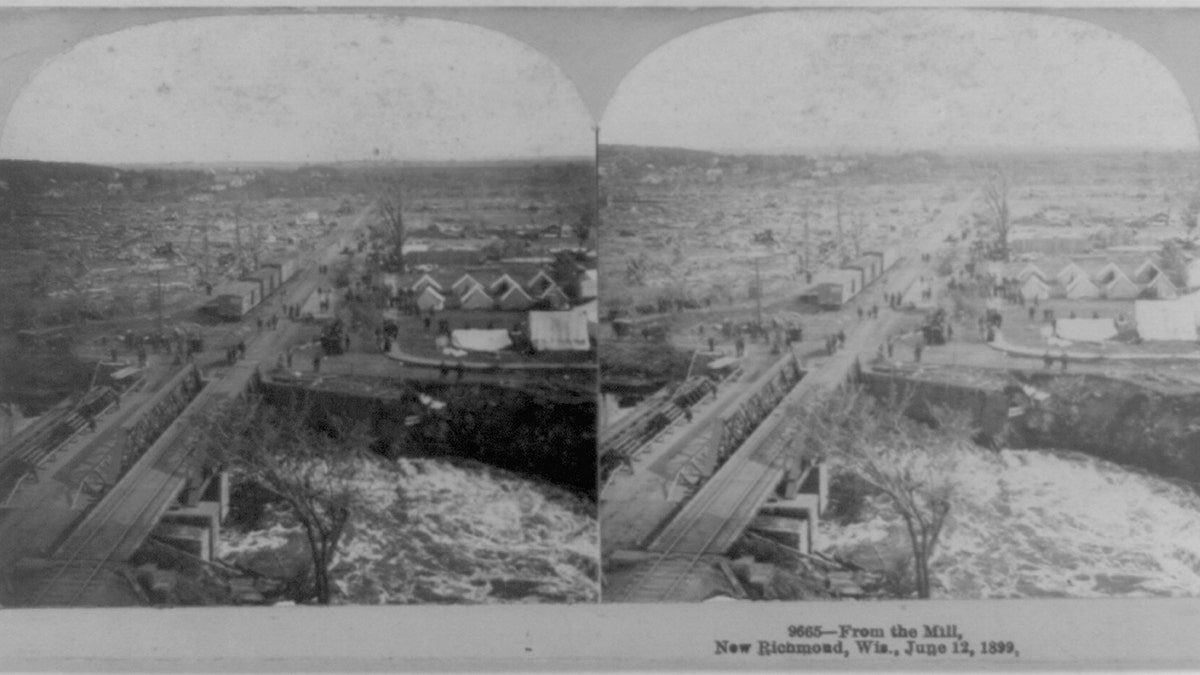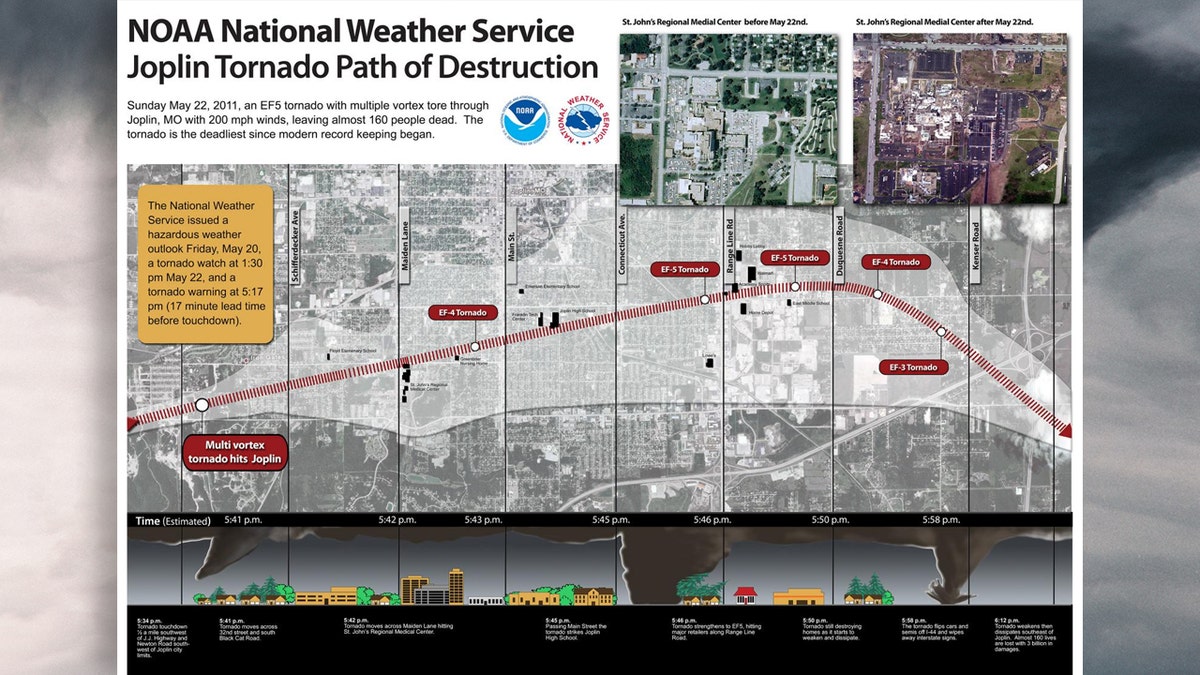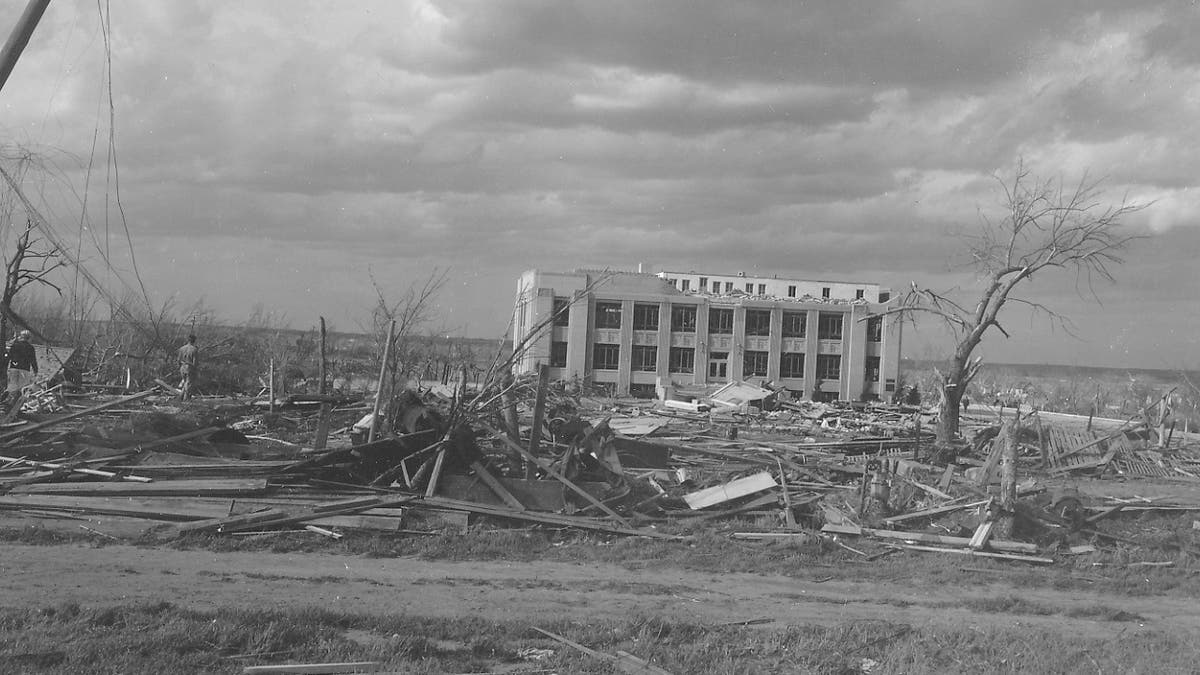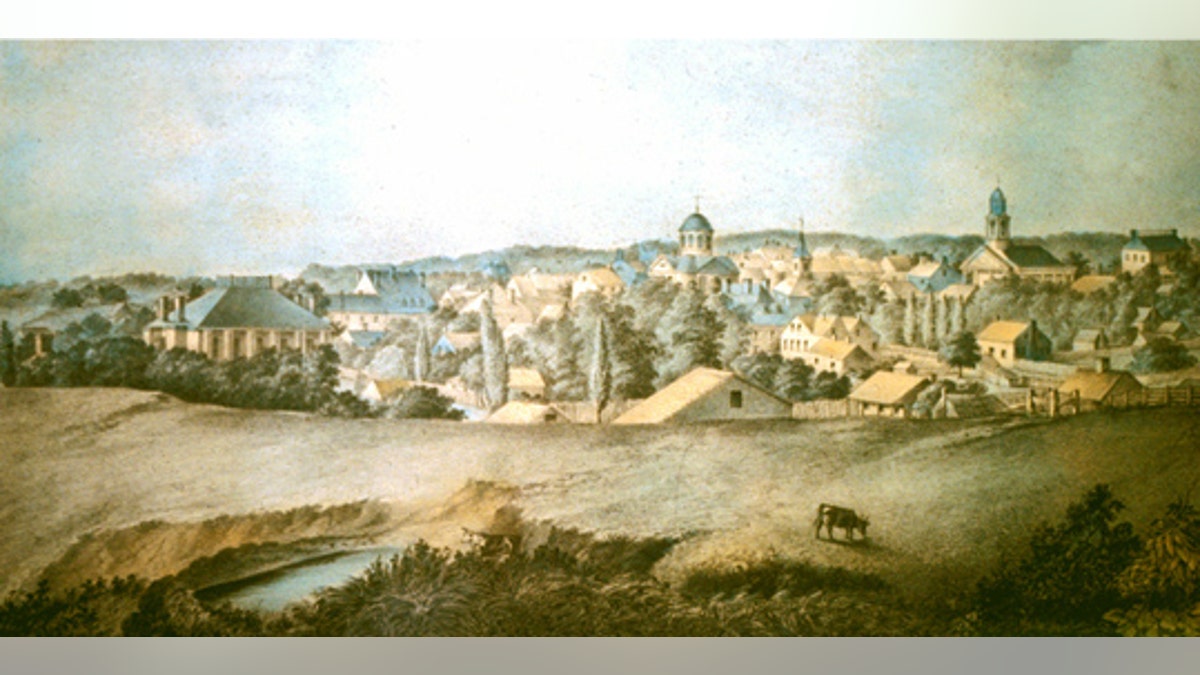Blown Away: Wild video of first-hand tornado experiences
Many people have risked their lives to capture video of tornadoes. Here is a look at some of the most incredible footage captured of tornadoes over the past few years.
Born from thunderstorms, tornadoes can cause immense devastation as they rip apart homes and toss cars like toys.
Tornadoes can happen any time of the year if conditions are right, but there are distinct seasons for twisters in different parts of the county, according to the National Oceanic and Atmospheric Administration's Storm Prediction Center.
"There is a general northward shift in "tornado season" in the U. S. from late winter through mid-summer," the SPC says. "The peak period for tornadoes in the Southern Plains, for example, is during May into early June. On the Gulf Coast, it is earlier during the spring; in the Northern Plains and upper Midwest, it is June or July."
On average, tornadoes kill about 60 people per year, mostly from flying or falling debris. The actual number can vary from a single digit to hundreds, depending on both "weather and society" at the time, according to the SPC.
Here are the 10 deadliest U.S. tornadoes on record:
10. The 1954 "Beecher Tornado" in Flint, Michigan
The "Beecher Tornado" killed 116 people and injured 844 when it struck Flint, Mich., on June 8, 1953. The F5 tornado with winds between 261 and 318 mph traveled 27 miles and was one of eight tornadoes that occurred that night in Michigan.
The National Weather Service said that 113 deaths were reported in a 4-mile stretch, and 340 homes were destroyed, of which 107 suffered "major damage." Another 66 buildings destroyed or damaged to farms, businesses and other buildings.
9. The 1899 "New Richmond Tornado" in New Richmond, Wisconsin

Damage can be seen after a tornado destroyed New Richmond, Wisconsin on June 12, 1899. (Library of Congress)
The "New Richmond Tornado" leveled the town of New Richmond, Wis., on June 12, 1899, killing 117 people and causing 150 injuries. The twister struck on a hot summer afternoon on the first day the Gollmar Brothers Circus was in town, according to the NWS.
"Massive amounts of flying debris resulted in multiple deaths in at least 26 different families. Six families had four or more deaths," the NWS Milwaukee/Sullivan says on a fact page. "The good visibility of the funnel may have prevented an even higher death total."
8. The 1908 Amite, Louisiana and Purvis, Mississippi tornado
The "Amite/Purvis Tornado" left 143 people dead when it struck on April 24, 1908. The storm caused major damage along its 150-mile path from Amite, La., to Purvis, Miss., according to History.com.
7. The 2011 Joplin, Missouri tornado

The path of destruction of the 2011 Joplin tornado can be seen in this image. (National Weather Service)
The massive EF-5 tornado that struck the city of Joplin, Mo., on May 22, 2011, killed 158 people and left more than 1,000 injured.
"The Joplin tornado is the deadliest since modern record-keeping began in 1950 and is ranked 7th among the deadliest tornadoes in U.S. history," the NWS says on a factsheet.
Among the 8,000 buildings destroyed by the strong twister included St. John's Regional Medical Center, where five of the dead included patients. That year ended up being the fourth deadliest tornado year in U.S. history, according to the NWS.
6. The 1947 "Woodward Tornado" in Texas and Oklahoma
The "Woodward Tornado" has the grim distinction of being the most deadly tornado to ever strike within the borders of the state of Oklahoma, killed 181 people on April 9, 1947.
The twister was on the ground up to 100 miles, first touching down in Texas before moving at speeds of up to 50 mph into Oklahoma. The F5 tornado was at points up to 1.8 miles wide, and bore down on the city of Woodward "without warning," according to the NWS.

A view of the damaged Woodward County Courthouse building in Woodward, Okla. after the deadly tornado on April 9, 1947. (National Weather Service)
"Over 100 city blocks on the west and north sides of the city were destroyed with lesser damage in the southeast portion of the town," the NWS' Norman forecast office says on a fact page. "Confusion and fires reigned in the aftermath with over 1,000 homes and businesses destroyed, at least 107 people killed in and around Woodward, and nearly 1,000 additional injuries.
5. The 1936 "Gainesville Tornado" in Georgia
The "Gainesville Tornado" left 203 people dead after a pair of storms struck the city on April 6, 1936. The tornados struck the southwest part of the town before moving into the commercial district, according to the Digital Library of Georgia.
CLICK HERE FOR THE FOX NEWS APP
4. The 1936 "Tupelo Tornado” in Mississippi
The day before the devastating tornado struck Gainesville, Ga., an F5 tornado struck Tupelo, Miss., on April 5, 1936, killing 216 people and causing 700 injuries.
3. The 1896 "St. Louis Tornado" in Missouri

The third deadliest tornado to strike the United States claimed 255 lives when it struck St. Louis, Missouri on May 27, 1896. (AP Photo/St. Louis Public Library Archives, J.C. Strauss)
The third deadliest tornado to strike the United States left 255 dead in St. Louis, Mo., when it struck on May 27, 1896.
The NOAA says during the less than half an hour that the tornado—which would most likely be rated as an EF-4 today— was on the ground, it tracked a three-mile-wide path of destruction.

The 1896 St. Louis Tornado tore away some 300 feet of the structure of the Eads Bridge. (NOAA Photo Library)
"Even the Eads Bridge, which was considered “tornado-proof” as the first major bridge constructed by making use of true steel, was damaged by the powerful tornado with nearly 300 feet of its eastern approach being torn away," NOAA says. "Much of the central portion of St. Louis was also destroyed, as were factories, saloons, hospitals, mills, railroad yards, and churches throughout the city."
2. The 1840 "Natchez Tornado" in Mississippi

The tornado started in Concordia Parish, La., and killed hundreds of people on boats and barges in the Mississippi River before striking Natchez, Miss. (AP Photo/Courtesy of Natchez Historical Society)
A tornado that started on May 6, 1840 in Concordia Parish, La., killed hundreds of people on boats and barges in the Mississippi River before striking Natchez, Miss., and killing several dozen more there.
With 317 killed, this is the second deadliest tornado in U.S. history.
1. The 1925 "Tri-State" Tornado across the Midwest
The deadliest tornado on record in the United States took place on March 18, 1925, when the "Tri-State Tornado" caused a path of destruction across the Midwest.
The tornado began about 1 p.m. northwest of Ellington, Mo., and had killed 11 people by the time it reached the Mississippi River. Crossing into southern Illinois, the twister demolished the town of Gorham at about 2:30 p.m.

The deadliest tornado on record in the United States took place on March 18, 1925 when the "Tri-State Tornado" killed 695 people across the Midwest. (AP Photo)
Most of the deaths -- 695 in total -- occurred when the mile-wide tornado plowed through the towns of Murphysboro, De Soto, Hurst-Bush and West Frankfort. The storm later crossed the Wabash River into Indiana, where it tore up several more towns.
"With its rapid movement, monstrous size, and long track, the tornado took hundreds of lives and injured thousands," according to the NWS. "By all means, the Tri-State Tornado was a rare event—an event that few people will ever experience in their lifetime."
The Associated Press contributed to this report.






















